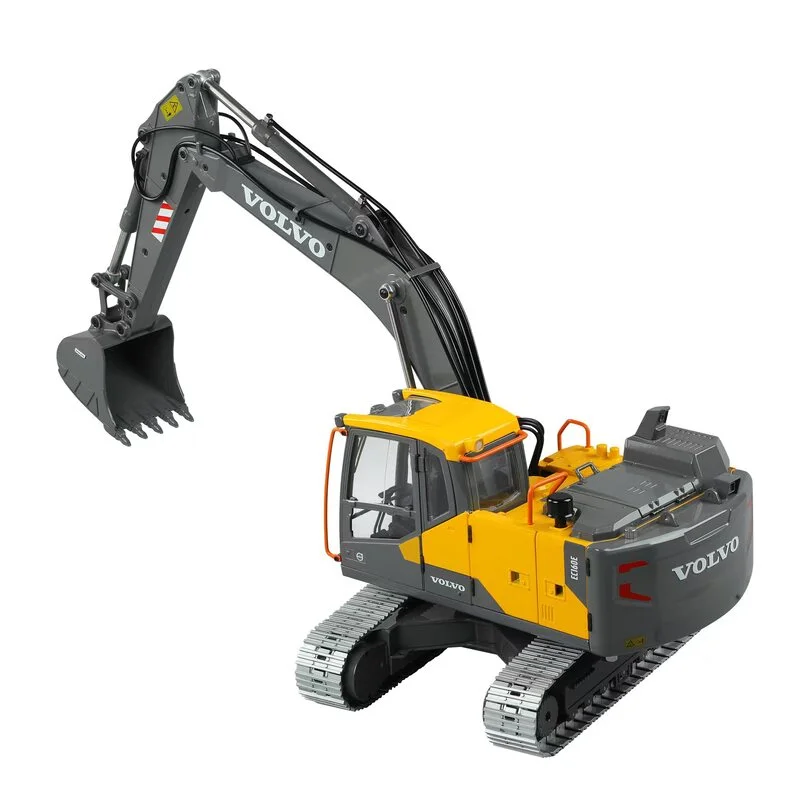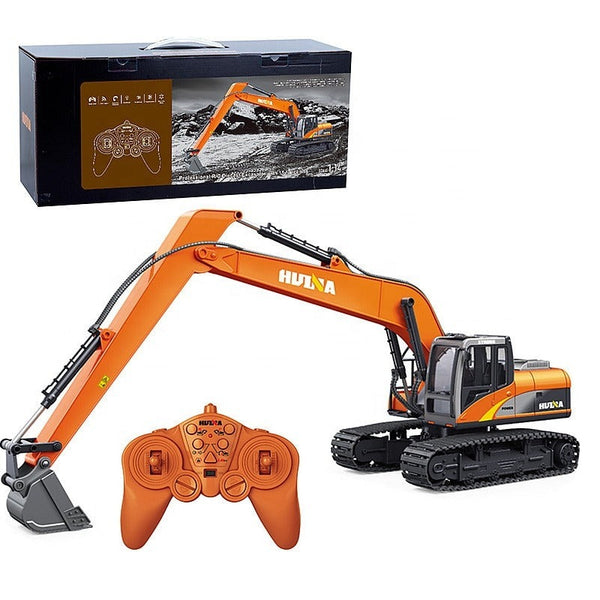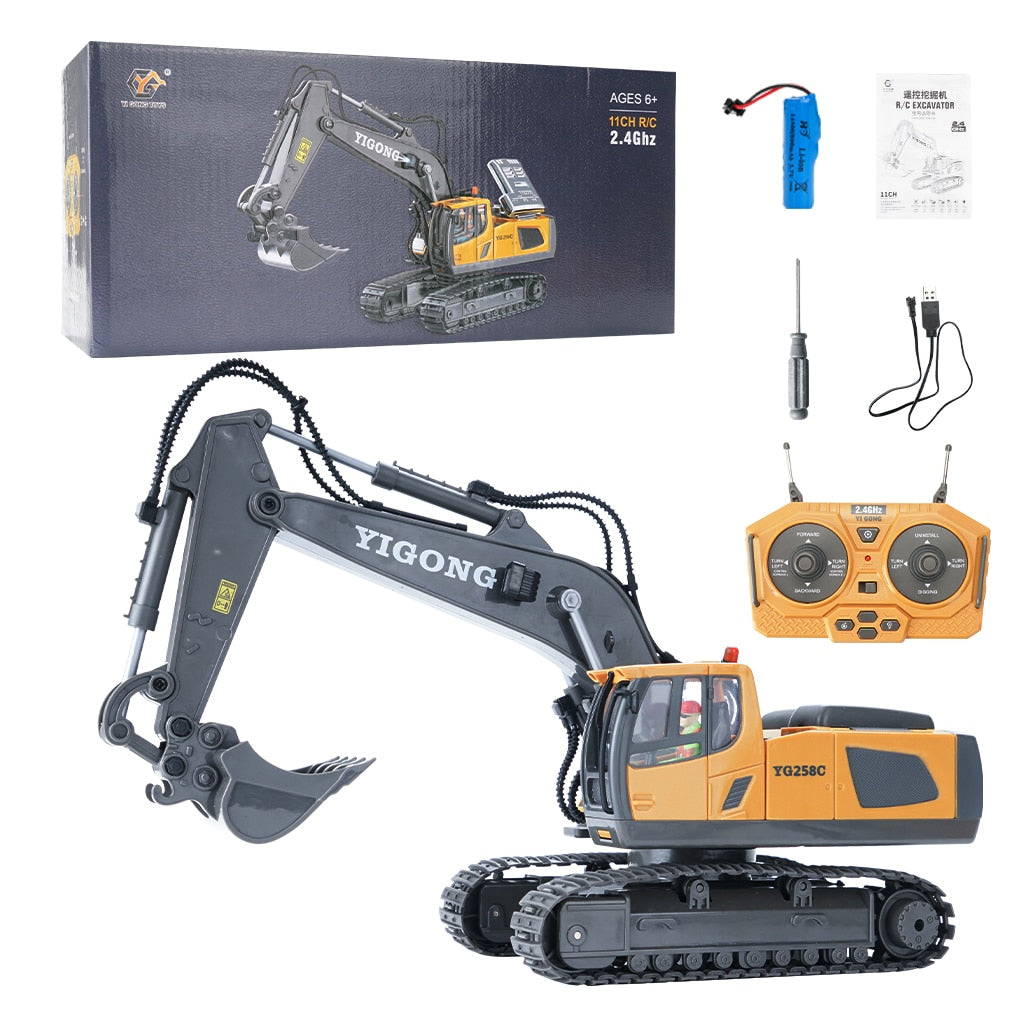The Vital Features of Excavator That Make Things a Must-Have Device
Excavators are important in the construction and landscaping sectors. Their functional add-ons permit for a variety of jobs, from excavating to demolition. Additionally, they flaunt superior digging depth and reach, powered by robust engines. Driver convenience and portable designs improve functionality in various settings. What genuinely sets excavators apart are their innovative hydraulic systems and durability. Comprehending these features can clear up why they are considered vital tools on any type of work website.
Flexible Accessories for Improved Capability
Excavators are powerful makers on their own, the addition of versatile add-ons greatly boosts their performance. These add-ons transform a typical excavator into a multi-purpose device, appropriate for a range of jobs. Containers, for example, can be found in numerous shapes and dimensions, allowing drivers to dig, scoop, and move products efficiently. Hydraulic thumbs can be included for improved gripping and handling of bulky things, such as logs or rocks.Furthermore, specialized accessories like augers and breakers permit exploration and demolition work, expanding the excavator's utility on building and construction websites. remote control excavator. Grapples are an additional choice, suitable for arranging and moving debris. This versatility not just enhances productivity however likewise minimizes the demand for numerous devices, conserving time and costs. By outfitting excavators with the right accessories, drivers can deal with diverse tasks, making them indispensable in the building sector
Superior Excavating Depth and Reach
Excavators are developed with remarkable digging deepness and reach, allowing them to steer in tight areas and accessibility hard-to-reach areas. This ability is important for different building and construction and excavation projects, where typical equipment might fail. With adjustable boom arms and extendable tracks, excavators can quickly navigate unequal terrain while maintaining stability.The digging depth can differ significantly amongst versions, frequently ranging from 10 to 25 feet, depending upon the layout and purpose. This function allows drivers to dig deep into structures, trenches, and other deep structures successfully. Additionally, the reach of an excavator permits accurate digging and product handling without repositioning the machine frequently, saving time and labor costs.Ultimately, the superior digging deepness and reach of excavators make them vital for experts looking for to finish intricate tasks with accuracy and effectiveness. Their versatility improves productivity on work websites, showcasing them as an important device in contemporary building.
Powerful Engine Efficiency

Powerful engine efficiency plays a critical role in the abilities of an excavator when it comes to effectiveness and productivity on building and construction websites. A durable engine creates considerable horsepower, allowing the equipment to deal with durable tasks with simplicity - remote control excavator. This toughness converts right into faster cycle times, making it possible for operators to complete tasks much more quickly.Additionally, effective engines supply the required torque to manage tough terrains and differed tons, making certain that the excavator can perform efficiently under various conditions. Whether it is lifting, excavating, or moving materials, the engine's performance directly affects the overall operational efficiency of the machine.Furthermore, improvements in engine innovation have caused enhanced gas effectiveness, lowering operational costs while preserving power output. Inevitably, the engine's efficiency functions as the foundation of an excavator, verifying its standing as an indispensable device in the building and construction sector
Advanced Hydraulic Equipments

Enhanced Lifting Ability
A considerable enhancement in raising capability can be credited to sophisticated hydraulic systems located in modern-day excavators. These systems use high-pressure fluid to generate greater force, permitting operators to lift much heavier tons effortlessly. The design behind these hydraulics assurances peak efficiency, giving an excellent power-to-weight ratio that improves overall effectiveness. Therefore, excavators can tackle demanding tasks, such as lifting huge products or tools, without jeopardizing stability. Additionally, the durable layout of hydraulic parts adds to boosted resilience and integrity, making them appropriate for various building and construction settings. This improved lifting ability not just minimizes the moment needed for jobs but additionally reduces the need for added machinery, confirming essential for both productivity and cost-effectiveness in the construction market.
Boosted Accuracy Control
Although traditional excavators usually dealt with accuracy, modern-day hydraulic systems have transformed control devices, making it possible for drivers to perform jobs with remarkable precision. These innovative systems use symmetrical control shutoffs that enable for smoother and a lot more responsive movements, considerably minimizing the margin for mistake. Operators can now finely tune the excavator's movements, making it simpler to browse limited spaces and manage delicate materials. Boosted feedback systems additionally educate operators of real-time efficiency, ensuring suitable control between the equipment and driver. This enhanced precision not only enhances effectiveness however likewise improves security on job sites, reducing the risk of crashes. Consequently, contemporary excavators furnished with advanced hydraulic systems are very useful tools for construction and excavation projects needing precise accuracy.
Operator Comfort and Presence
Driver comfort and exposure are important components in the layout of modern excavators (remote control excavator). Functions such as ergonomic seat layout, boosted visibility alternatives, and effective control formats greatly enhance the operator's experience and performance. Focusing on these aspects assurances that operators can work successfully and securely in different problems
Ergonomic Seat Layout
Comfort and visibility are paramount in excavator design, with the ergonomic seat playing a crucial duty in enhancing the operator's experience. An ergonomic seat is engineered to sustain the operator's body, lowering fatigue throughout long hours of procedure. Adjustable features, such as seat elevation, backrest angle, and a knockout post back support, accommodate individual choices and advertise ideal posture. These changes enhance convenience and enable the driver to preserve concentrate on jobs without pain. Furthermore, a well-designed seat can give better side support, permitting for smoother handling when the excavator is in operation. This thoughtful style not just boosts efficiency however likewise contributes to general safety and security, ensuring that operators can do their responsibilities properly and efficiently.
Enhanced Visibility Attributes
The design of an excavator prolongs beyond just the seat, with boosted visibility attributes playing a considerable role in operator convenience and overall safety and security. Huge home windows and strategically positioned mirrors supply operators with a clear view of their surroundings, minimizing blind areas. This style consideration permits much better spatial recognition, which is vital in active job settings. Furthermore, several excavators include rearview cameras and progressed monitoring systems that help drivers in navigating limited rooms. The combination of these exposure includes not only promotes security yet also decreases operator fatigue by making it possible for easier tracking of work locations. Eventually, improved presence adds to a lot more reliable procedures and aids assure that excavators can execute their tasks properly and securely.
Control Layout Efficiency
While maneuvering facility job sites, an effective control design significantly enhances both operator convenience and visibility. A well-designed control setup guarantees that operators can access necessary functions with very little effort, decreasing tiredness during long hours. Ergonomic joystick positionings and user-friendly switch plans permit for smooth operation, enabling operators to maintain concentrate on the task handy. Additionally, clear visibility of both the workspace and the control board is crucial for security and accuracy. Modern excavators often include flexible seats and control settings to suit various driver preferences, further enhancing comfort. Eventually, a thoughtfully go designed control layout not just boosts productivity yet also promotes a safer working environment by enabling drivers to react promptly to altering conditions.
Compact Design for Urban Environments
As metropolitan building sites typically face space restraints, a small layout becomes essential for excavators running in these atmospheres. These machines are engineered to navigate tight spaces, enabling efficient maneuverability in crowded task websites. A decreased impact allows them to function very closely to existing frameworks, reducing disruption and taking full advantage of productivity.The compact layout often consists of shorter tracks and a tighter turning distance, facilitating procedure in slim streets and constrained areas. Light-weight materials add to alleviate of transportation, making it simpler to move the excavator from one place to an additional within the metropolitan landscape.Additionally, numerous small excavators are outfitted with attributes such as extendable arms and functional add-ons, boosting their functionality while preserving a small dimension. This adaptability allows operators to tackle a selection of tasks, from excavating to demolition, all while fitting perfectly into the constraints of metropolitan settings.

Resilience and Upkeep Considerations
Toughness stands as a necessary consider the performance and durability of excavators, specifically popular urban atmospheres. These devices undergo extensive problems, consisting of differing dirt types, severe temperatures, and high-frequency use. Premium materials and robust building are necessary for guaranteeing that excavators can withstand these obstacles without compromising functionality.Regular maintenance is equally important in preserving toughness. Set up assessments, timely oil adjustments, and the substitute of used elements add find out this here significantly to an excavator's lifespan. Operators has to additionally pay attention to hydraulic systems, tracks, and undercarriages, as these components usually birth the impact of wear and tear.Investing in sturdy excavators with considerable maintenance plans improves dependability and decreases downtime, ultimately leading to boosted efficiency on building sites. Consequently, comprehending the interplay between longevity and upkeep is vital for any person thinking about the procurement of an excavator for metropolitan jobs.
Regularly Asked Questions
Just How Do Excavators Compare to Various Other Building Tools?
Excavators stand apart amongst building devices due to their versatility, allowing tasks such as excavating, grading, and training. Compared to others, their hydraulic capabilities offer higher performance and power, making them indispensable on different work sites.
What Security Features Are Consisted Of in Modern Excavators?
Modern excavators integrate different safety features, consisting of rollover security systems, alarms, and advanced presence enhancements. These components collaborate to decrease threats, guaranteeing operator security while enhancing efficiency on building and construction sites and other demanding environments.

Can Excavators Be Used in Winter Issues?
Excavators can undoubtedly be used in wintertime conditions, offered they are geared up with ideal wintertime add-ons and preventative measures are taken. Appropriate upkeep and modifications boost their efficiency, making certain efficient procedure in spite of difficult climate situations.
What Is the Ordinary Lifespan of an Excavator?
The ordinary life-span of an excavator usually ranges from 7,000 to 10,000 hours of operation. This duration can significantly depend on upkeep techniques, running problems, and the specific model's toughness and design attributes.
Exactly how Do I Pick the Right Excavator Size for My Task?
Choosing the best excavator size includes assessing job extent, website conditions, and product kinds. Take into consideration factors like reach, depth demands, and weight capacity to ensure maximum efficiency and safety during operation. Dimension matters considerably in job success. Additionally, the reach of an excavator permits for exact excavating and product handling without repositioning the maker regularly, conserving time and labor costs.Ultimately, the remarkable digging depth and reach of excavators make them important for experts seeking to complete complicated jobs with accuracy and efficiency. Comfort and presence are vital in excavator style, with the ergonomic seat playing an important function in boosting the operator's experience. The layout of an excavator expands past simply the seat, with enhanced exposure functions playing a substantial duty in operator convenience and total safety. Modern excavators typically incorporate flexible seats and control settings to fit various driver choices, additionally improving convenience. Light-weight materials contribute to ease of transportation, making it easier to relocate the excavator from one area to another within the city landscape.Additionally, many portable excavators are furnished with attributes such as extendable arms and functional add-ons, improving their functionality while keeping a small size.
Comments on “The Top Benefits of Integrating a remote control excavator into Your Team”